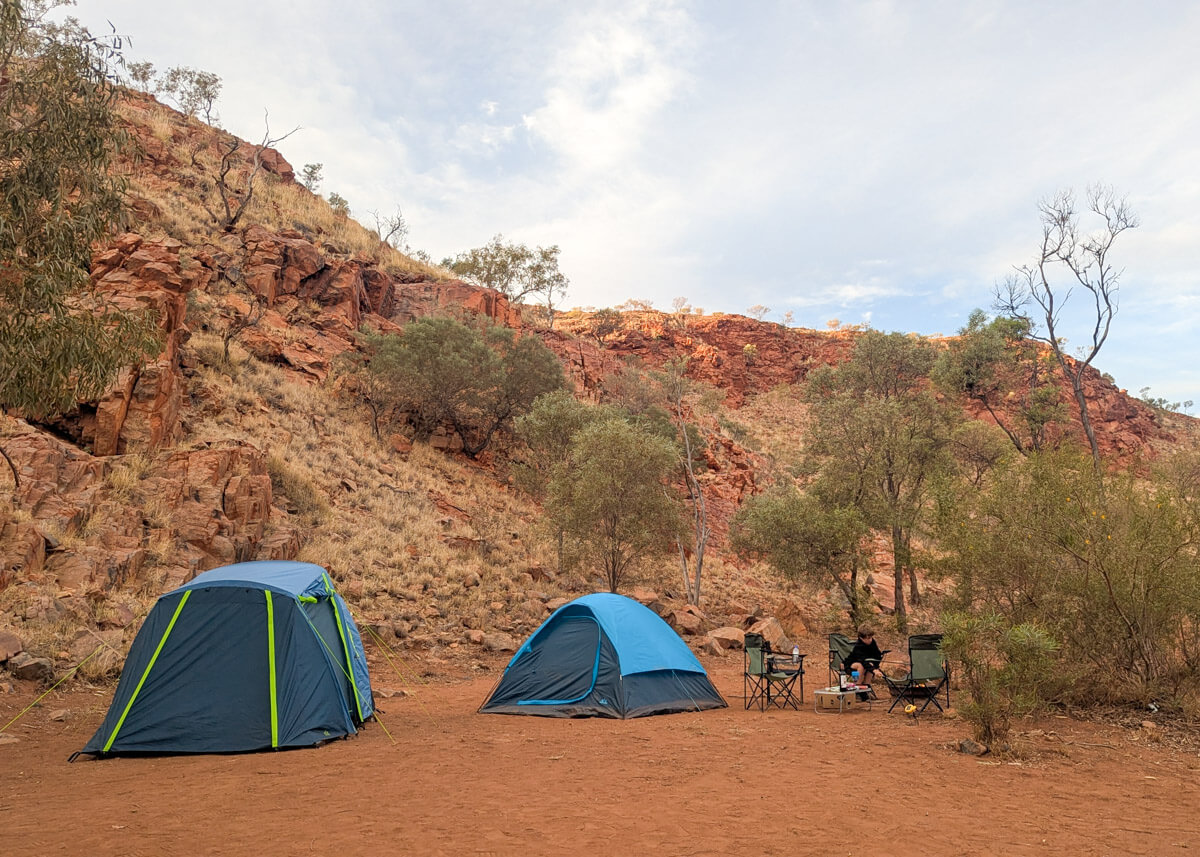Conventiently located halfway between Karijini National Park and the Ningaloo Coast, Cheela Plains Station offers a true outback wilderness camping experience in Western Australia’s Pilbara region.
Western Australian campsites tend to be organised and sanitised affairs, something that might come as a surprise to travellers expecting an altogether more remote experience. And while we appreciated the comfort and convenience of these large-scale campsite on our WA road trip, it wasn’t until we reached Cheela Plains that we truly felt like we were camping in the Australian Outback. This was the only campsite on the entire trip that allowed individual campfire and was truly remote, a perfect place to switch off for the evening and get back to nature.
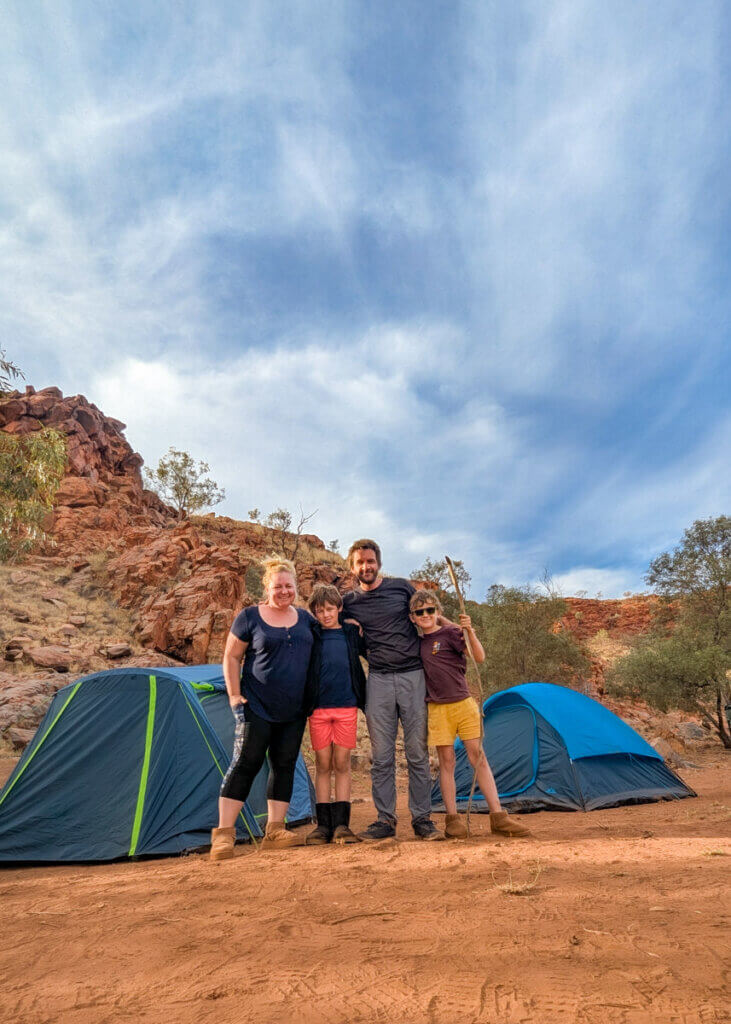
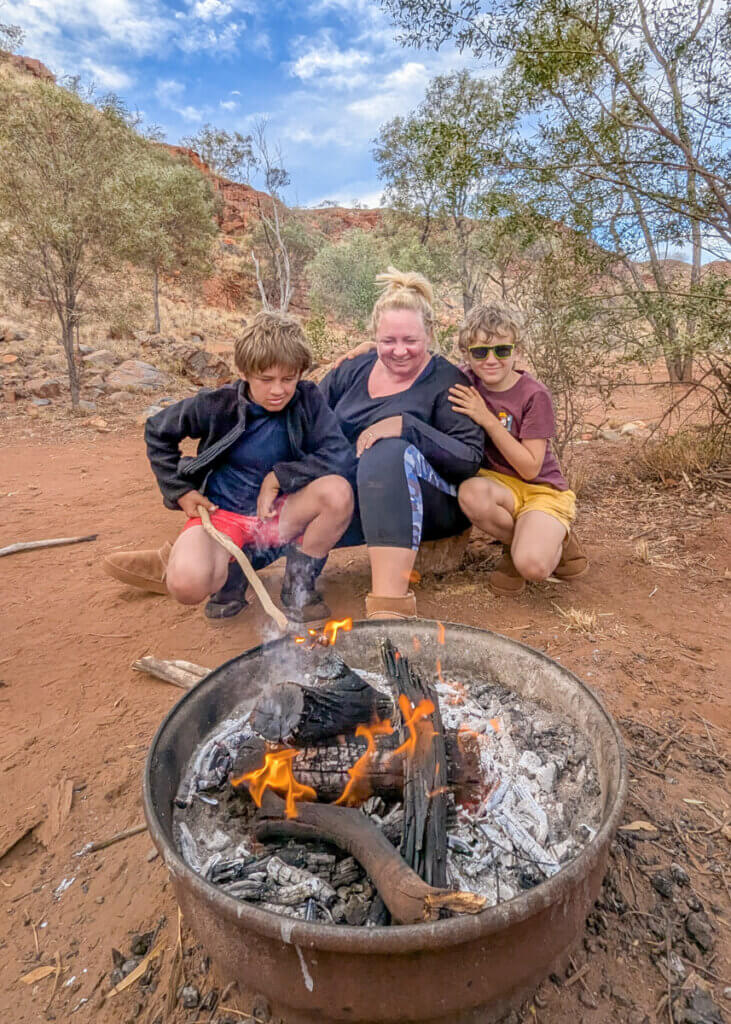
Arriving to Cheela Plains Station
One of the main drawcards for Cheela Plains is its location on the otherwise desolate State Route 136, one of the only stops between Ningaloo Reef (Coral Bay) and Karijini National Park. Well signposted off the main road, Cheela Plains HQ is just a few hundred metres from the road along a well-maintained unsealed track. Here you’ll find the reception area, small shop, cafe and the Red Plains Campground with hard-standing sites for campervans or motorhomes, plus a small grassed area where tents can be pitched. They also have a selection of pre-erected tents and hotel-style rooms to stay in.
It’s a very friendly and professional welcome, you’ll be taken through the information pack and shown where to go and what to expect. You can also buy firewood here if you’re planning on sitting by the fire this evening. It’s quite a bustling and busy area, with lots of camper trailers and caravans parked up here, either breaking up the journey with a coffee, or settling in for the night. Patchy WIFI is available for free and you should also get some Telstra signal here.
The cafe is one of the most popular places to stop in the region and the only option between Nanutarra Roadhouse and Paraburdoo.
The wilderness campsite
If you’re looking for an adventure, it’s highly recommended to stay at the Wilderness Campsite, located a twenty minute drive along the main road towards Paraburdoo. Due to the risks of night driving, you must check-in at the main reception area and collect your key by 4.00pm at the latest.
Keep an eye out for an abandoned car at the side of the road that marks the entrance point to the wilderness area. From here, it’s a short drive to the locked gate, and then a 15km drive along a graded unsealed road to reach the wilderness campgrounds. The road is in good condition but still needs to be treated with respect due to the dust, undulations and some corrugated stretches. Take it slow and expect to travel around 40km/h at best. If you’re here in a rented vehicle, make sure to check your T&Cs regarding off-road travel.
There are three separate wilderness campsites available but we chose the Woongarra Pool, which has four large camping areas, ideal for tents and privacy. Unlike the other two options (Nummana Pool and Mussel Pool), toilet facilities are provided, although they are a decent walk from the camping areas. If you choose the other two campgrounds, you must hire a chemical toilet (or have your own) and a 4WD drive is recommended. In practice, Mussel Pool is usually accessible by a 2WD though if weather conditions are in your favour.
The campsites are truly peaceful and we were fortunate that no other guests were here during our one-night stay, giving us a truly unique wilderness experience. We were pleasantly surprised how soft the ground was and our tent pegs easily slotted into place. The nearest tap is next to the toilet block, so you might prefer to bring your own water in a large container.
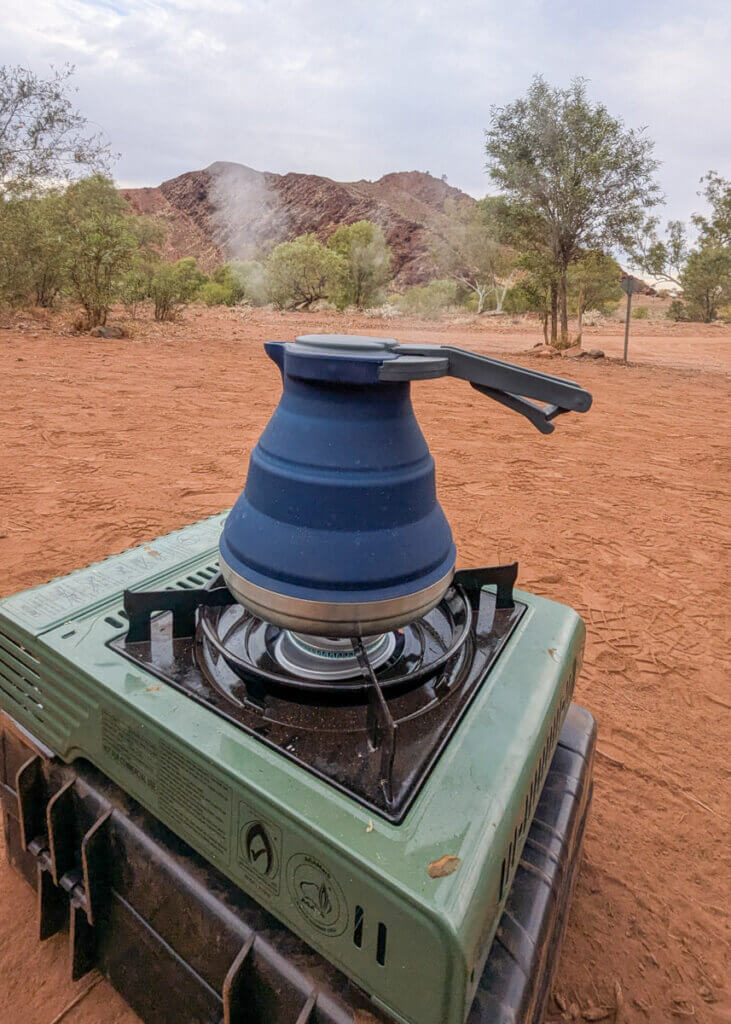
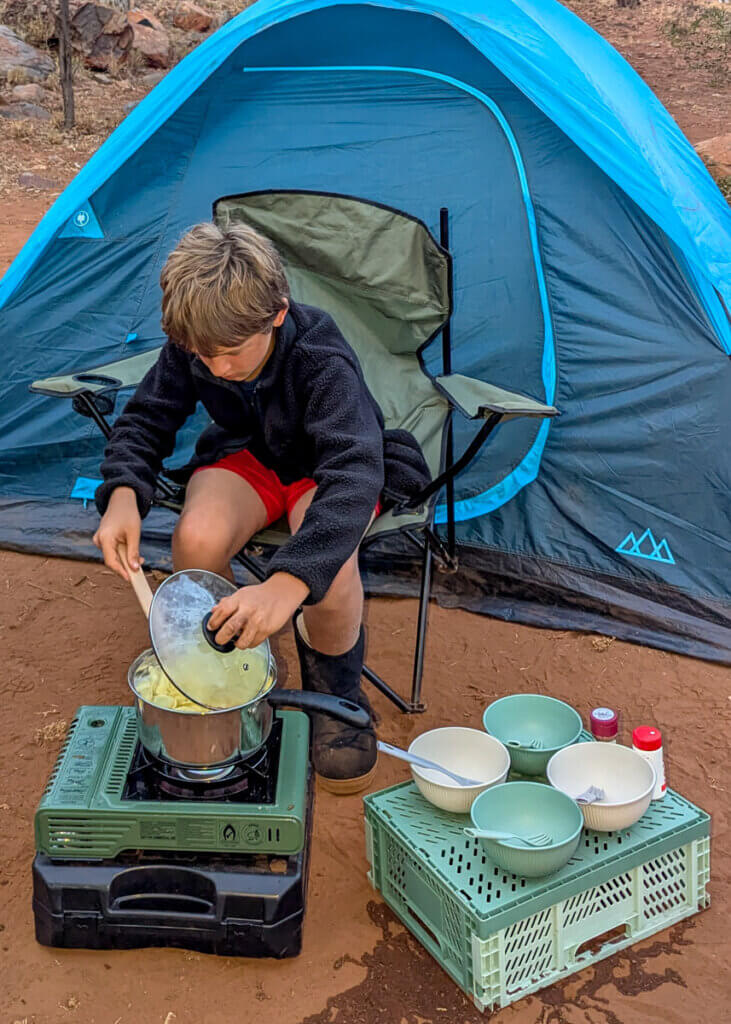
The facilities
Facilities are basic, but that’s part of the appeal. It probably goes without saying but make sure you bring everything with you that you’ll need for the entire stay, including cooking equipment, food, drinks and firewood. Drinking water is available next to the toilet block although, due to the five or ten minute walk from the camping area, it’s much easier to bring a large container with you from outside to store all of your drinking and cooking water.
If you’re feeling brave, there is technically a shower, but it’s probably easier to have a wash in one of the swimming pools in the morning, or wait until your next accommodation.
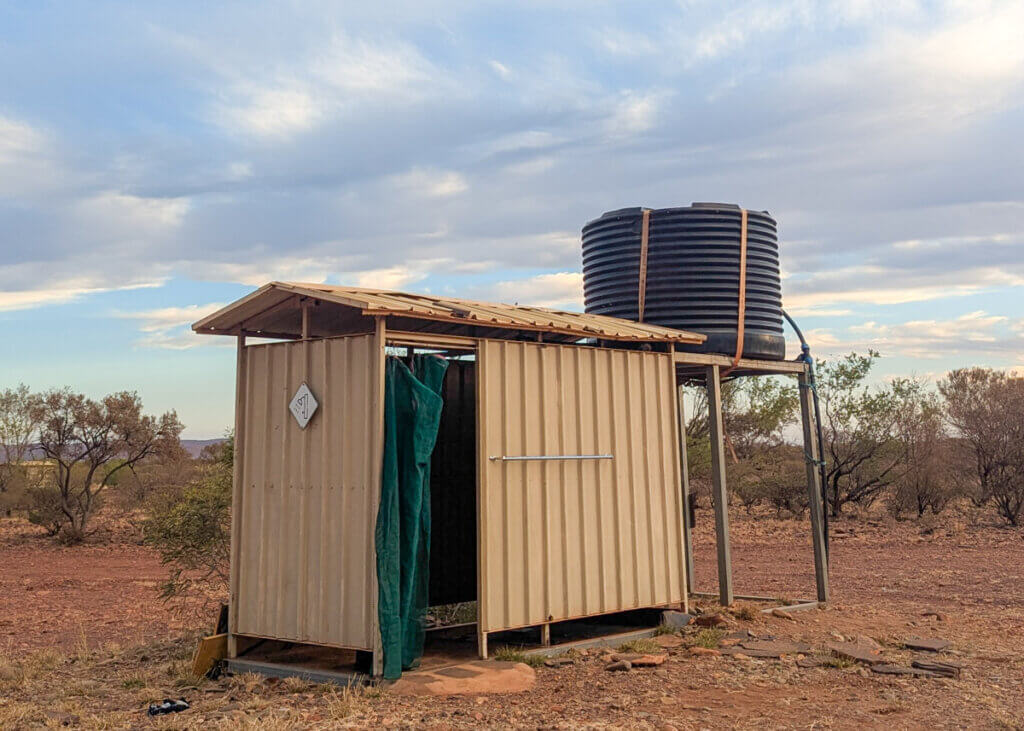
The swimming hole
A few minutes drive from Woongarra Pool along a decent but bumpy track is Mussel Pool, where you can take a refreshing dip in the swimming area.
Brace yourself though, it’s a cold experience all round, especially if you’re here in the morning before the sun has worked its magic. Aqua shoes are handy if you have them with you, the entry point is a little on the stony side and, as the water is entirely opaque from the silt and mud, it’s not really a pool where you run and jump in. On the far side you’ll spot a couple of rope swings for the adventurous, but most people will be content simply floating around until the cold makes it too uncomfortable.
If you have a 4WD, there are other pools and tracks to explore.
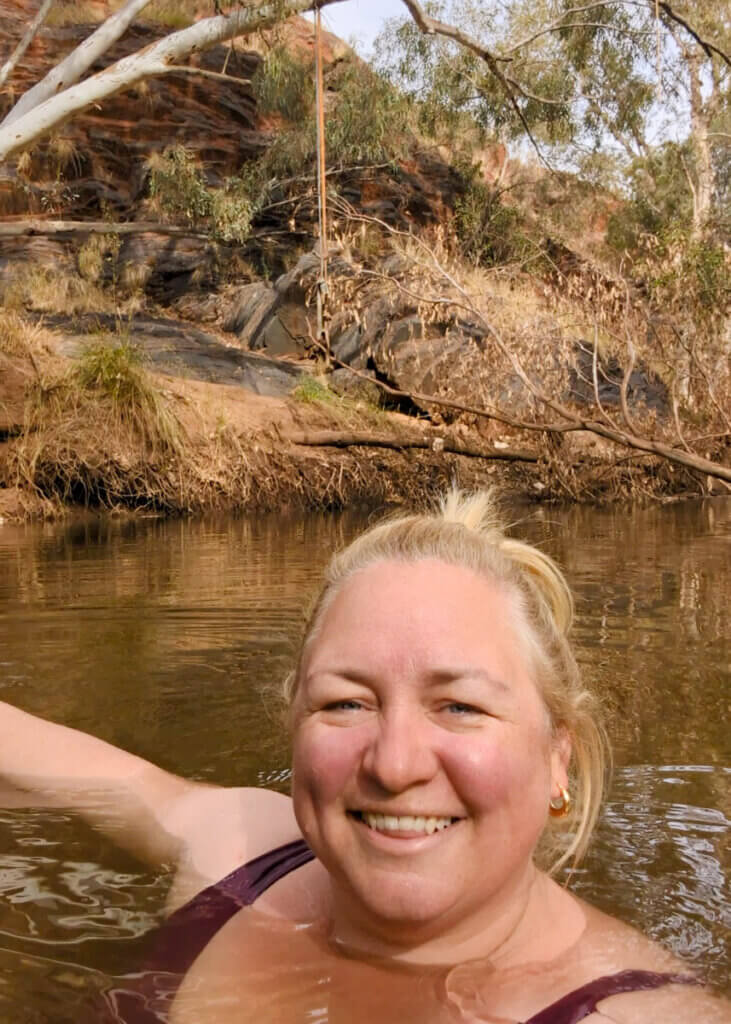
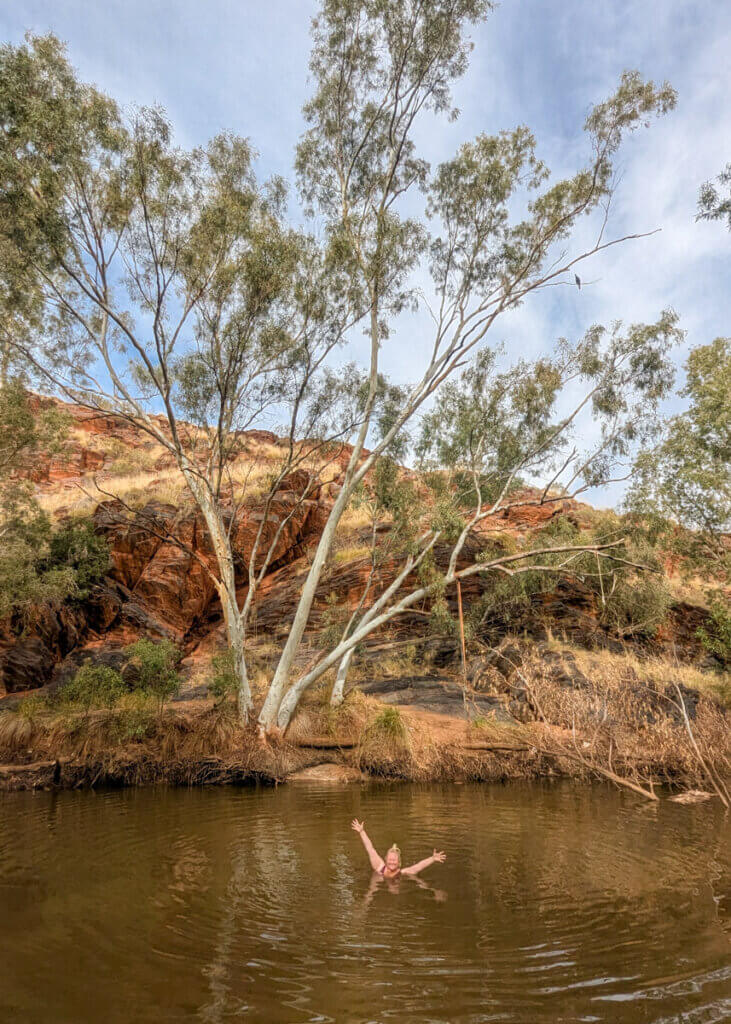
How to book
It’s essential to book ahead, in the peak season almost all of the camping areas are fully booked weeks ahead.
Cheela Plains is only open to tourists from April to October, bookings can be made via their website.
Final thoughts
If you’re like us, you might have some preconceptions about camping in the Australian Outback, with starlit evenings, campfires, solitude and silence on the agenda. In truth, many campsites in Western Australia are the antithesis of this, more focused on facilities, comfort and profit-margins than a true wilderness experiences.
Cheela Plains is one of the few places still offering something different, especially if you choose one of their wilderness campsites. With the fire roaring, starry skies overhead, and space to yourself, a night here is like nothing else around and it was easily our favourite night on the WA road trip.
You may also like to read:
Western Australia with kids: an epic 6 week road trip itinerary
Coral Bay without the tours: is it worth it for families?
10 AMAZING things to do in Perth with kids

